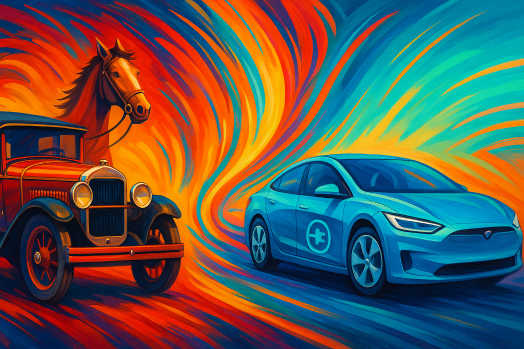The story of the automobile is a sweeping journey from the era of horsepower—when carriages were drawn by animals—to today’s world of battery power and electric mobility. This evolution is marked by technological leaps, shifting consumer preferences, and the relentless pursuit of efficiency and sustainability.

In the early 19th century, the first experiments with self-propelled vehicles began to emerge. While steam-powered contraptions appeared in the late 1700s, it was the 1830s that saw the birth of the electric vehicle, with inventors in Scotland, Hungary, and the United States developing crude battery-powered carriages. By the late 1800s, electric vehicles were surprisingly popular, especially in urban centers. American inventor William Morrison’s 1890 electric wagon is often credited as the first practical EV, and by the turn of the 20th century, electric taxis were a common sight in cities like New York. Early electric cars were quiet, easy to operate, and didn’t require hand-cranking like their gasoline counterparts, making them especially appealing to city dwellers and women drivers.
However, the internal combustion engine (ICE) soon began to dominate. Karl Benz’s 1886 Motorwagen and Henry Ford’s introduction of the affordable, mass-produced Model T in 1908 revolutionized personal transportation. Gasoline cars offered greater range, faster refueling, and eventually, lower costs—advantages that electric vehicles of the era couldn’t match. By the 1920s, improved road networks and the discovery of vast oil reserves cemented the ICE vehicle’s supremacy, relegating electric cars to a historical footnote for much of the 20th century.
The oil crises of the 1970s, growing environmental concerns, and advances in battery technology sparked renewed interest in electric vehicles. The 1974 CitiCar, inspired by golf carts, became the best-selling electric car in the U.S. until the arrival of Tesla decades later. Government initiatives, such as the U.S. Department of Energy’s research programs and California’s zero-emissions mandates, kept the dream of electric mobility alive through the late 20th century.
The modern electric revolution began in earnest in the late 1990s and early 2000s. The Toyota Prius, launched in 1997, brought hybrid technology to the mainstream, blending gasoline and electric power for greater efficiency. The introduction of the Nissan Leaf in 2010 and the Tesla Roadster in 2008—powered by advanced lithium-ion batteries—marked a turning point, demonstrating that electric cars could be practical, desirable, and even exciting to drive.
Today, battery power is rapidly reshaping the automotive landscape. Advances in battery chemistry, charging infrastructure, and government incentives have fueled exponential growth in electric vehicle sales, especially in markets like China and Europe. Modern EVs offer impressive range, rapid acceleration, and the promise of zero tailpipe emissions, addressing both consumer demands and environmental imperatives. The rise of brands like Tesla, along with established automakers launching their own electric lineups, signals that the age of battery power has truly arrived.
From the earliest electric carriages to today’s high-tech EVs, the automobile’s evolution reflects society’s changing needs and values. The journey from horsepower to battery power is not just a tale of technological progress—it’s a testament to human ingenuity and the drive toward a cleaner, more sustainable future.

